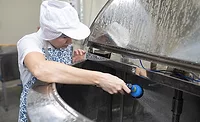Food Safety: Let's get back to basics
Lack of sanitation is the root cause of almost every food poisoning incident and a significant number of the recalls.

The major food safety issue of the summer of 2010 was the recall of more than 500,000,000 shell eggs from two farms in Iowa. The recall was prompted by Salmonella enteriditis contamination and more than 2,000 reported illnesses. If you followed the recall reports, you know that while there was a real dearth of information on the subject, there was also a lot of speculation on the cause.
With the release of FDA’s FD – Form 483 on the two operations involved in the recall, the industry knows what contributed to the contamination. For example, the investigators not only observed evidence of a rodent infestation, they saw live rodents during the investigation.
Eggs have been on the food safety radar for some time. Each year, numerous illnesses are associated with them, and it has been estimated that between 1 in 10,000 and 20,000 eggs are contaminated with Salmonella. Since healthy hens can transfer the pathogen to eggs, all eggs are now washed and marketed under refrigeration to minimize potential contamination on the outside of the shell. In addition, consumers are encouraged to properly cook eggs before consumption. However, the onus remains on farmers and processors to minimize potential contamination.
In September, FDA’s recall web pages included announcements of product being embargoed in a Georgia warehouse due to rodent infestation, an injunction issued against a New York salad manufacturer for operating under unsanitary conditions and frozen mamey recalled for Salmonella. Salmonella contamination is almost always associated with unsanitary conditions.
Sanitation or lack thereof is the root cause of almost every food poisoning incident and a significant number of the recalls, and all of these incidents underscore the importance of good sanitary practices. This is one reason ISO 22000, the Codex Food Hygiene documents and every audit format emphasize the need for prerequisite programs. Basic prerequisite programs, including cleaning and sanitizing, pest management, product traceability, sanitary design of equipment, preventive maintenance, education and training and others, are not glamorous. As a result, they tend to be a low priority. They are, however, essential for ensuring product quality and safety. Consequently, senior management must provide the leadership and resources to make sure sanitation protocols are in place. Management must also ensure the workplace has the tools and time to provide training on the proper procedures for all persons involved in these activities. In addition, managers must create and document these protocols. They must realize developing, implementing and maintaining prerequisite programs aren’t only part of the program; they must ensure the resources are available to verify every procedure created is effective.
Having good prerequisite programs in place is a good business practice since the cost of recalls, legal actions and other expenses due to a lack of sanitation far outweigh the cost to build the programs. In food safety, “an ounce of prevention is worth a pound of cure.”

The major food safety issue of the summer of 2010 was the recall of more than 500,000,000 shell eggs from two farms in Iowa. The recall was prompted by Salmonella enteriditis contamination and more than 2,000 reported illnesses. If you followed the recall reports, you know that while there was a real dearth of information on the subject, there was also a lot of speculation on the cause.
With the release of FDA’s FD – Form 483 on the two operations involved in the recall, the industry knows what contributed to the contamination. For example, the investigators not only observed evidence of a rodent infestation, they saw live rodents during the investigation.
Eggs have been on the food safety radar for some time. Each year, numerous illnesses are associated with them, and it has been estimated that between 1 in 10,000 and 20,000 eggs are contaminated with Salmonella. Since healthy hens can transfer the pathogen to eggs, all eggs are now washed and marketed under refrigeration to minimize potential contamination on the outside of the shell. In addition, consumers are encouraged to properly cook eggs before consumption. However, the onus remains on farmers and processors to minimize potential contamination.
In September, FDA’s recall web pages included announcements of product being embargoed in a Georgia warehouse due to rodent infestation, an injunction issued against a New York salad manufacturer for operating under unsanitary conditions and frozen mamey recalled for Salmonella. Salmonella contamination is almost always associated with unsanitary conditions.
Sanitation or lack thereof is the root cause of almost every food poisoning incident and a significant number of the recalls, and all of these incidents underscore the importance of good sanitary practices. This is one reason ISO 22000, the Codex Food Hygiene documents and every audit format emphasize the need for prerequisite programs. Basic prerequisite programs, including cleaning and sanitizing, pest management, product traceability, sanitary design of equipment, preventive maintenance, education and training and others, are not glamorous. As a result, they tend to be a low priority. They are, however, essential for ensuring product quality and safety. Consequently, senior management must provide the leadership and resources to make sure sanitation protocols are in place. Management must also ensure the workplace has the tools and time to provide training on the proper procedures for all persons involved in these activities. In addition, managers must create and document these protocols. They must realize developing, implementing and maintaining prerequisite programs aren’t only part of the program; they must ensure the resources are available to verify every procedure created is effective.
Having good prerequisite programs in place is a good business practice since the cost of recalls, legal actions and other expenses due to a lack of sanitation far outweigh the cost to build the programs. In food safety, “an ounce of prevention is worth a pound of cure.”
Looking for a reprint of this article?
From high-res PDFs to custom plaques, order your copy today!






